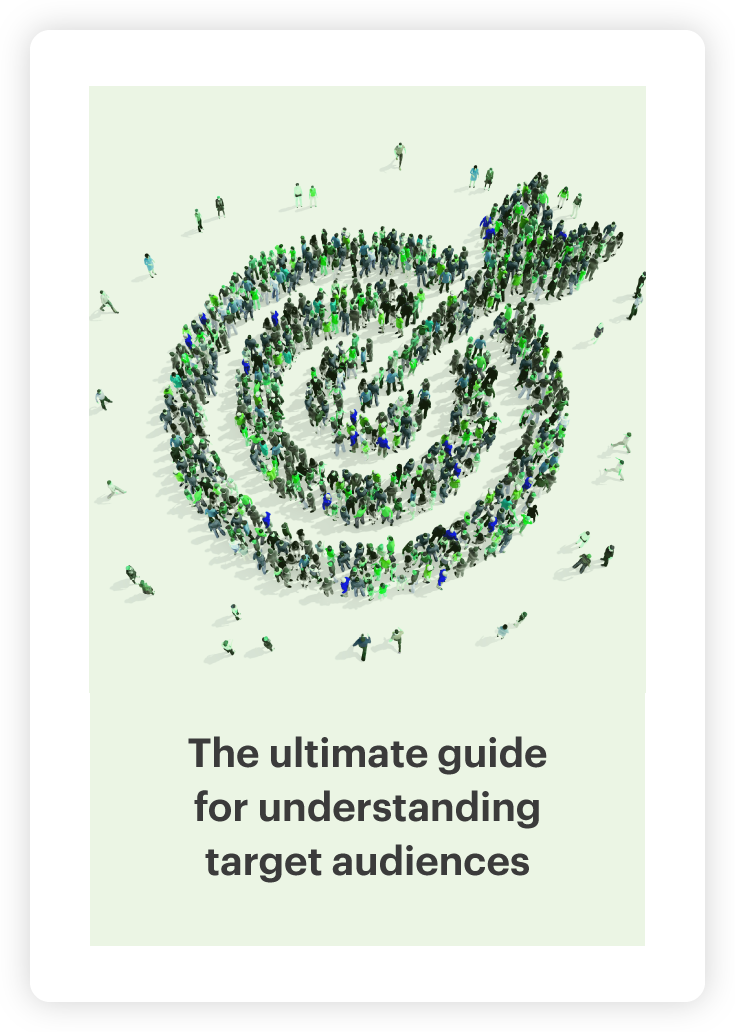There will be blood: analyzing survey data about periods
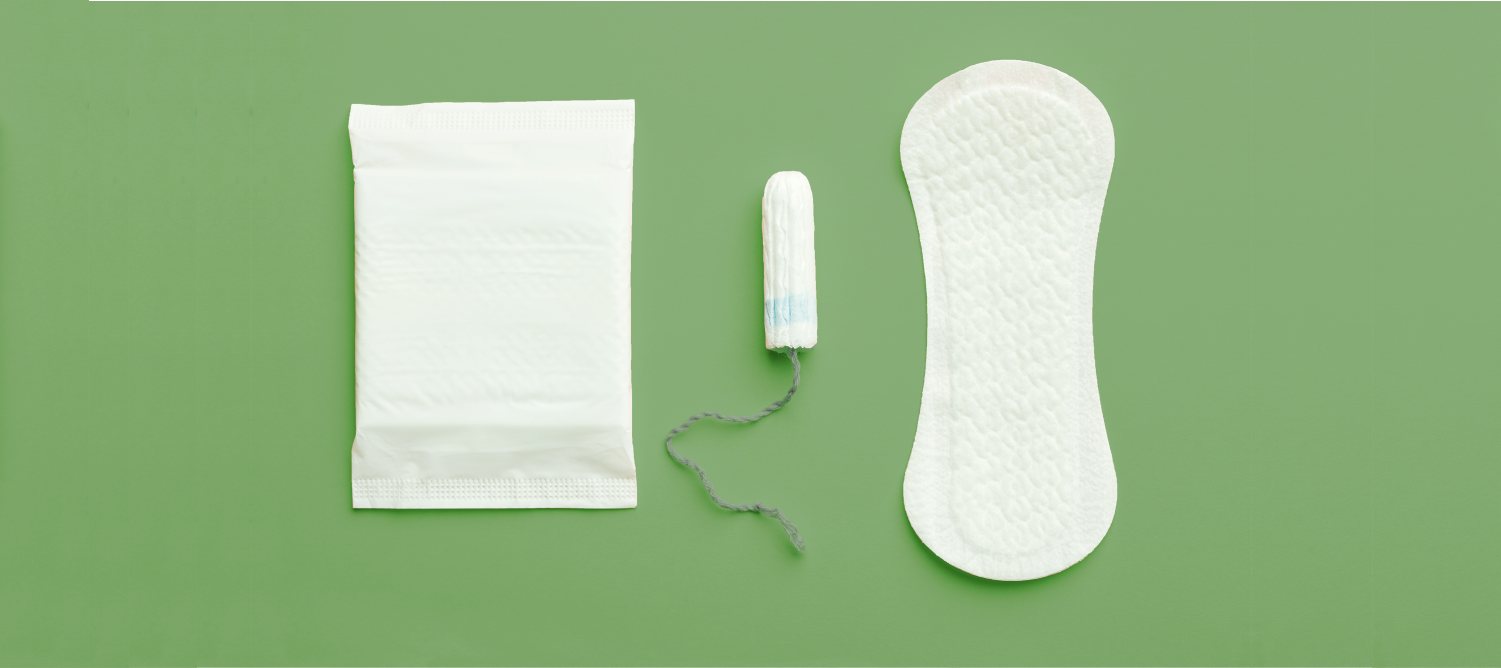
By Mica Lowe
There has always been a stigma around talking about periods, one that hasn’t been helped by the standard advert featuring a generic glamorous woman running, cycling, or jumping, but always clad head-to-toe in white.
Most people will remember images of the infamous blue liquid used in ad campaigns to show how absorbent products are, but there was never any blood, and definitely no mention of cramps, mood swings or generally feeling like crap. This is not an authentic representation of a person’s real-life experience with a period. And these days, a brand story needs to be authentic in order to create trust with a consumer.
There is hope. There are some brands, like Essity, who are pushing boundaries in femcare industry. But what I really wanted to know is how people actually feel about the femcare industry and its advertising? Do people share my view, and think that advertising has a duty to be more reflective of reality? Or do people simply not care?
To understand more, we conducted an open-ended questionnaire asking people from all ages and genders about whether or not they thought femcare advertising should be more representative of the reality of periods. I then split this survey data about periods between those people who answered yes, and those who answered no and used the Relative Insight platform to compare the language used in the two data sets. And let me tell you, the results are interesting.
It’s important to note at this stage that respondent data can be sliced, diced and compared in numerous ways. I could have compared the differences in the things people from different age groups said, or even compared the different way the sexes talked, or I could have split and analyzed answers based on the type of products people used. But for this piece, I am interested to see how people reacted to the question – “do you think femcare advertising should be more reflective of real life?”
I just don’t care:
Let’s start with those who answered no – these people make up almost 25% of those we surveyed, and despite saying ‘no, they don’t care’, they definitely had some interesting and vocal opinions.
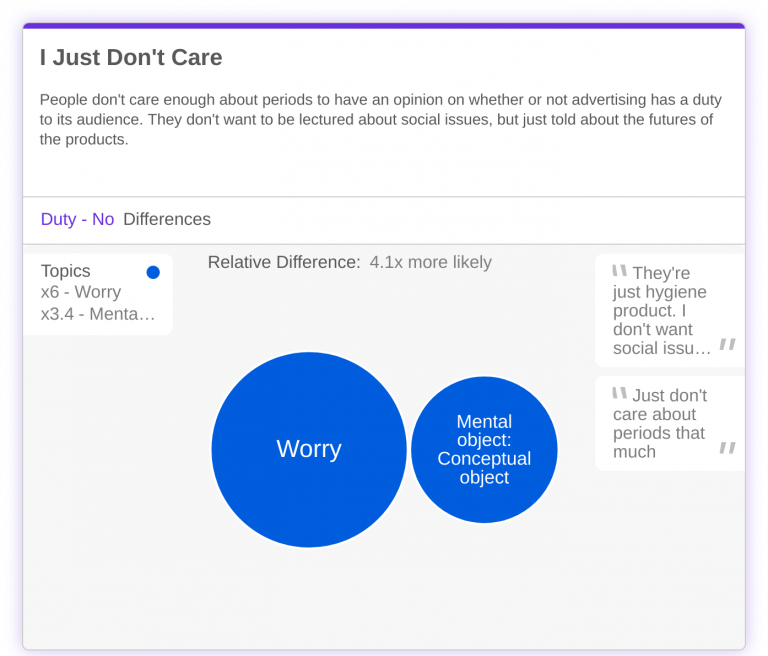
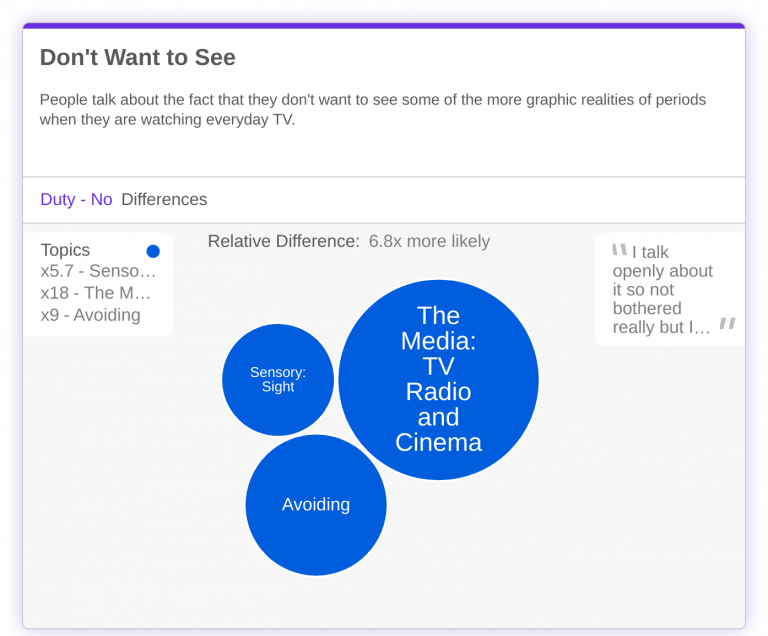
This section of our audience spoke about how they don’t want to see the more graphic realities of periods on their TV every day, as they talked about how they feel that their period is a very small part of their life, and they don’t like having to think about it outside of those few days a month.
Along a similar vein, these people don’t want to be ‘lectured to’ about social issues through advertising, and they simply just want to know about a femcare product and its features.
Another interesting insight from the respondents who believe the advertising industry doesn’t have this duty is that they were much more concerned with their own personal experiences than taking a world view, and spoke three times more often in the first person singular.
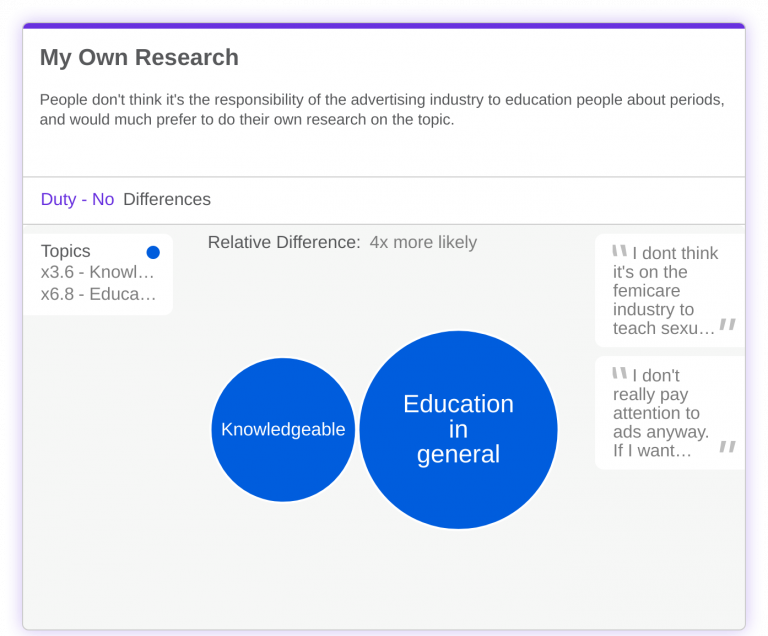
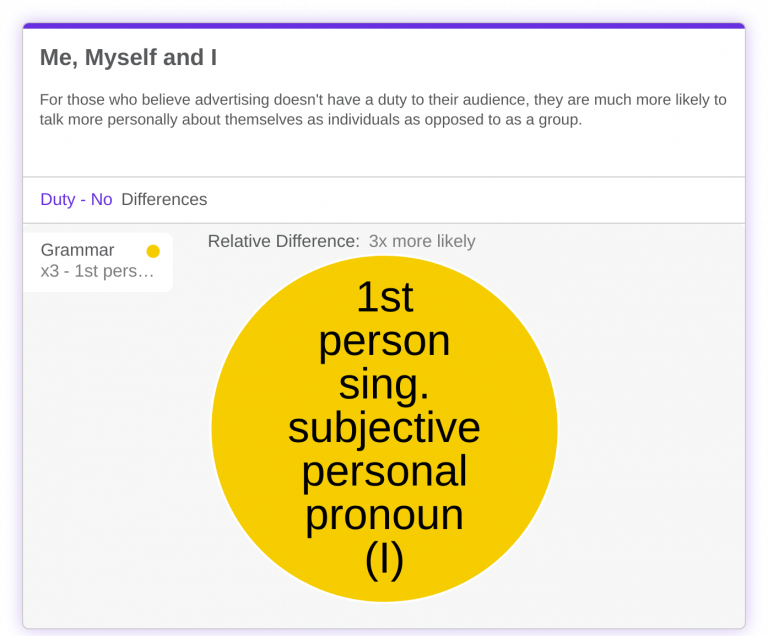
This is reflected in the way they spoke in general, being more likely to use the first person singular. But it is also reflected in the idea that they prefer doing their own individual research into periods. A common theme here is that they talk about how sexual health education, and education around periods, is not the responsibility of the advertising industry, but should be taught by schools and governments. It should be taken over by brands trying to make a profit, but rather is a private affair that they would prefer to look into on their own time.
I care – a lot:
When looking at the other side of the survey data about periods, unsurprisingly one of the first things I spotted was how much people don’t like the use of white clothing and blue liquid in the place of blood.
Those who thought the advertising industry does have a duty to its consumer base had a real problem with the use of blue liquid, as they say it makes periods seen dehumanising or sterile, my favourite quote being ‘just show real blood, women aren’t aliens’.


These people want adverts to depict the realities of their periods, and a big part of that is trust. If they can’t trust them to reflect the realities of periods, then they feel that they can’t trust the product to deal with those realities.
Another key insight was the social issues that dominate the survey data about periods:
This audience clearly states that they think periods are still seen as a taboo topic, or at least as something embarrassing that shouldn’t be spoken about openly, particularly the more negative side effects.
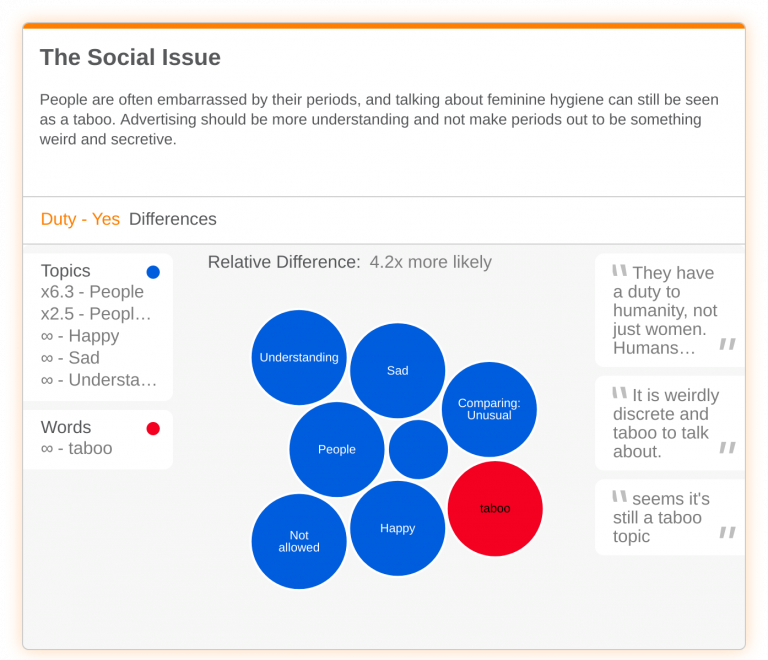
For the young girls and men who took the survey and who don’t have periods, they tended to take the view that an inauthentic advert is the only depiction they could have of a period. Without the realities of it being included in the ad, they felt it was hard to empathize, understand and see it as ‘weird’.
This is reflected in the way this audience speaks. The conversation reflected a ‘you’ and ‘us’ mentality. The ‘us’ is a community of people who want to change the conversation around periods. The ‘you’ are the brands and advertisements that do not reflect this desire, and so should not be trusted.
What’s the point?
So, there you have it. The majority of those surveyed do believe that advertising has a duty to reflect the realities of periods, but for those who don’t, there are some interesting arguments.
As I mentioned, one of the key takeaways from this survey data about periods is trust; 77.3% of people surveyed wanted more authenticity from the femcare industry. And we can understand what that means to them by using Relative’s survey analysis platform and unearthing the unique arguments and beliefs this audience has.
If you want to be authentic to reality, you need to understand your audience and what their reality is. Only then can you build brand trust.
